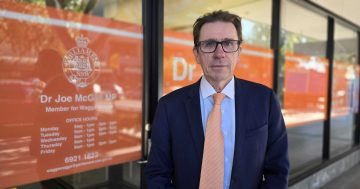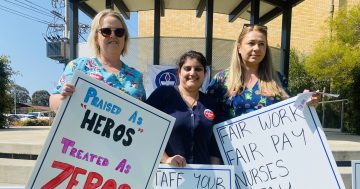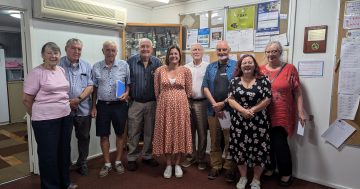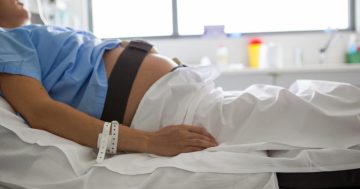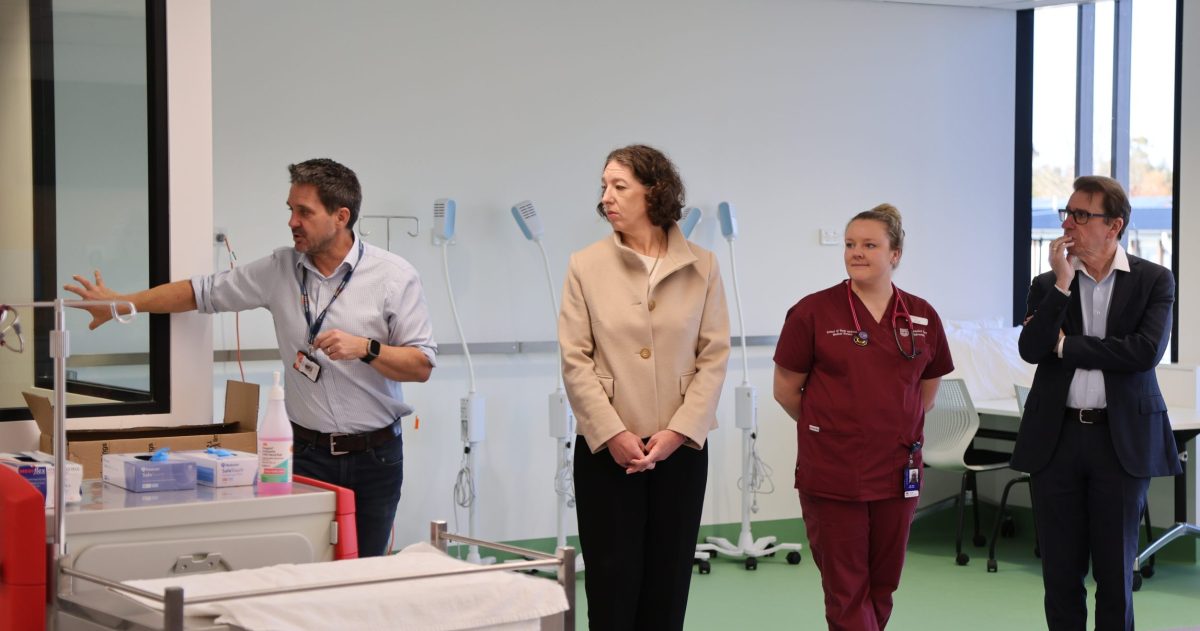
Dr Joe McGirr (far right) has been visiting healthcare professionals in regional Australia in his capacity as chair of the NSW Legislative Assembly’s Select Committee on Remote, Rural and Regional Health. Photo: Supplied.
Most people in regional, rural and remote Australia know the healthcare system is failing them. A June 2023 report for the National Rural Health Alliance (NRHA) quantified that failure. Regional, rural and remote Australia receives $848 less in healthcare per person, per year (age standardised) than metropolitan areas.
Dr Joe McGirr, Independent Member for Wagga Wagga and chair of the NSW Legislative Assembly’s Select Committee on Remote, Rural and Regional Health, said the model for funding regional health care had been an issue since Medicare started. The Commonwealth gives state governments money to run hospitals, while the Commonwealth pays GPs, specialists and the Pharmaceutical Benefits Scheme (PBS). It does that by paying rebates.
“If there aren’t any GPs or there are fewer GPs, the Commonwealth doesn’t have to pay as much but the state government has to run the hospitals,” Dr McGirr said. “That is why the NRHA did that study – to identify the level of underspending because there are no services.”
The report showed the situation had worsened from 2010 to 2020/21.
“We didn’t have much before and now we hardly have anything, so what do we need to do to fix this? If there are no primary healthcare services, how do we get them there?” Dr McGirr asked.

Susi Tegen, chief executive of the National Rural Health Alliance. Photo: Supplied.
A key issue is attracting, and retaining, healthcare professionals in regional areas. NRHA chief executive Susi Tegen said the system expected the same policies and funding that worked in the city to work in the country but they did not.
Dr McGirr said “15-minute medicine” might work in the cities but that was not attractive to GPs in rural areas.
“Fifteen-minute medicine doesn’t tackle complex issues like diabetes, heart disease, addiction and mental health,” he said. ”Those conditions require long consultations.”
One solution is a new model of collaborative care. Dr McGirr said it took some pressure off GPs and rewarded them for special skills. It recognised that, unlike in cities, hospitals were part of primary health care in rural areas. GPs and hospitals blurred.
“The collaborative-care model combines with hospitals and brings healthcare providers together to tackle complex and critical care so everyone is working at the top of their scope,” Dr McGirr said. “It is a new approach and there is evidence it can work and save hospitals money.”
The Rural Doctors Network has trialled it in five areas and Dr McGirr said NSW Health would do another five trials. The model should require the Federal Government to find the money it has not been spending in regional areas and give it to the State Government to employ doctors and other primary healthcare providers.
The NRHA has developed the Primary Care Rural Integrated Multidisciplinary Health Services (PRIM-HS) model. Ms Tegen said it brought together all the stakeholders – local government, health services, doctors, dentists, community members, primary health networks and workforce agencies – around the table with an independent chair.
“They look at the population’s health needs, what service delivery currently exists and out of that you look at the gap,” Ms Tegen said.
For example, a community with a young population could benefit from having a visiting midwife instead of families travelling three hours for maternity care.
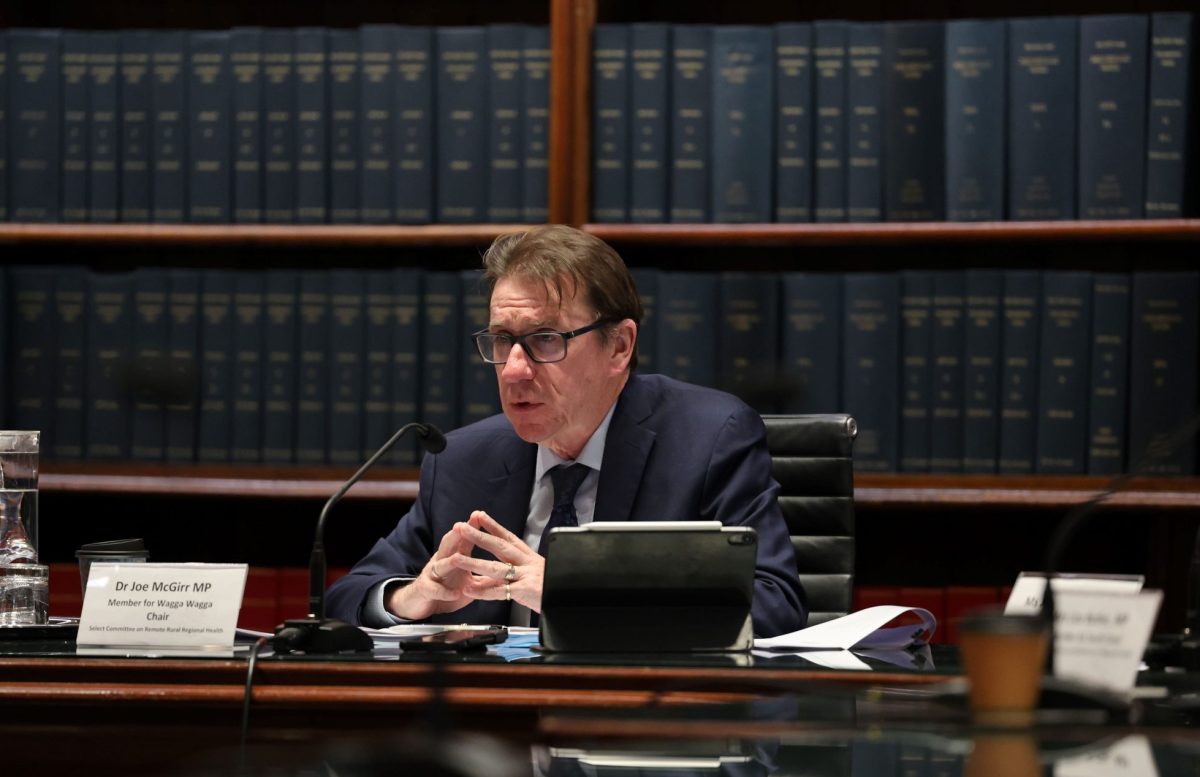
Dr Joe McGirr, Independent Member for Wagga Wagga, is chair of the NSW Legislative Assembly’s Select Committee on Remote, Rural and Regional Health. Photo: Supplied.
The NRHA has been working with communities to develop the model. Ms Tegen would like it to be part of the National Rural Health Strategy, whereby the Federal Government works with state governments, the NRHA and communities.
“At the moment, the state and federal governments aren’t working together effectively,” she said.
Dr McGirr said under the current funding model, the only part of the system that was capped was hospitals, which had an annual budget. The Commonwealth doesn’t cap payments to doctors, specialists, allied healthcare providers or the PBS.
“That unmanaged system puts a lot of pressure on the hospitals. I think that pressure will increase as the primary-care system unravels.”
For him, the real issue is what is happening with primary health care and the critical role it plays in preventive medicine, which is essential for better health outcomes and reducing pressure on hospitals.
“That needs re-examining, otherwise you end up with a very expensive system of specialists like the US.”
Dr McGirr has written to the NSW Treasurer and the Health Minister about the issues.
“I have raised it with the Treasurer and they are trying to explore that in the National Healthcare Reform Agreement, the way the Commonwealth funds the states,” Dr McGirr said.
”NSW needs to put pressure on them for alternative models to provide and fund primary health care in remote and rural Australia.”







